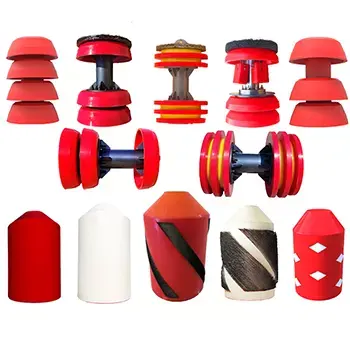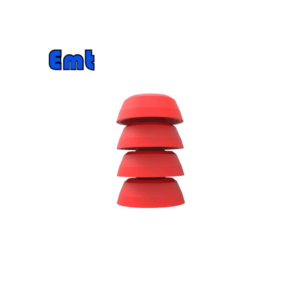Description

The role of the pig
1. Carry out infusion isolation to reduce the contact area of crude oil or different oil products when exchanging, reduce and prevent oil mixing;
2. Control the liquid in the pipe, such as reducing liquid accumulation in the liquid-gas mixed transport pipeline, water injection, drainage, drying, and oil transmission after pressure test in the pipeline segment;
3. Replace the oil in the pipeline;
4. Carry out internal anti-corrosion treatment on the pipeline, such as applying mortar or epoxy resin coating;
5. Inspect new pipelines or operating pipelines for defects. Including pipeline corrosion, crack, deformation monitoring, leakage detection, etc.;
6. Dynamic monitoring and management of pipeline system;

Working principle of cleaning pig
A pig is a device that relies on the fluid transported in the pipe as a power to promote its smooth operation in the pipe, remove the deposited material in the pipe, and check and maintain the pipe. The pigging principle of the pipe pig relies on the pressure of the fluid in the pipe to be cleaned or the water pressure or air pressure provided by other equipment as the power to push the pig forward in the pipe, scraping the dirt on the pipe wall, and pushing the dirt, debris, and liquid accumulated in the pipe out of the pipe.
The cleaning pig relies on the pressure of the fluid in the pipe to be cleaned or the water pressure or air pressure provided by other equipment as a power to push the pig forward in the pipe, scrape the dirt on the pipe wall, and push the dirt and debris accumulated in the pipe out of the pipe. The pig is driven by the front and back pressure difference in the pipeline there are two specific driving methods. One is to use the back pressure of the fluid as the driving force of the pig and remove the dirt in front of the pig in the pipeline during the propulsion. In this way, suitable for cleaning shorter pipes. Another way is to use the pressure generated by the fluid leaking from the surrounding of the pig to powder the dirt attached to the pipe wall and expel it. This method is more suitable for the cleaning of long pipes.
The outside diameter of the cleaning pig is usually 3% to 5% larger than the inside diameter of the pipe and can be tightly integrated with the pipe so it is highly sealed during operation and easy to clean dirt. Especially when the liquid is used as the pressure feed liquid, the jet formed will have a strong impact ability on the dirt on the pipe wall.
The outer diameter of the pig is generally 3%-5% higher than the effective inner diameter of the pipe. The interference of the cleaning pig and the inner wall of the pipe are tightly combined to form a high seal between the pig and the pipe wall, and then a pressure difference is generated before and after the pig. When the pressure difference reaches a certain value and can overcome the sum of static friction and other resistance between the pig and the pipe wall, the pig starts to run.
As one of the mechanical pipe cleaning equipment, its main functions have four aspects:
(1) Pipeline sweeping, rust removal, drying, plugging, and replacement;
(2) Wax removal, scale removal, water removal, and dust removal of pipelines in the production process of oil fields;
(3) Isolation of different media;
(4) Anti-corrosion coating in the pipeline.
(1) The application is mainly used in onshore or offshore gas and liquid pipelines;
(2) The use is mainly for the application of oil pipelines or oil and gas mixed transport pipelines;
(3) For the need to isolate different fluids to prevent different fluids from mixing, pollution, or chemical reactions;
(4)The pipeline internal coating technology is a new technology for the purpose of removing scale and sediment in the pipeline and implementing anti-corrosion in the pipeline has been developed into a comprehensive technology including transportation technology, machinery, electronics, and chemical engineering.

In addition, in recent years, pigging has been used in lift production technology to eliminate liquid pullback and obtain high-pressure gas to improve oil recovery. In view of the different functions of the cleaning pigs, they are also very different in construction.
The pig cleaning pipeline has wide adaptability, suitable for ultra-long pipeline cleaning, and can use multi-layer cleaning methods, with simple equipment, fewer personnel, and high economic benefits. Whether it is cracks, pits or dirt, modern pipe monitoring systems provide valuable assistance in the assessment of the working condition of the pipe system through the pig. The reliable pipe pig guarantees the conveying capacity and service life of the pipe system.
The research and design of cleaning pigs is a hot topic. The research of self-plugging, wear-resistant, suitable for different pipe diameters, and multi-function pig is the current goal of researchers. With the development of oil and gas into deepwater and ultra-deepwater fields, higher requirements are put forward for pigs. In the process of deep water pigging, once stuck, the solution is very limited and the operation is very difficult. The pressure resistance of the pig is also one of the issues that researchers need to consider in the future. All these put forward higher requirements for the design methods and materials of pigs. For wear-resistant problems, the sealing and wear parts of the pig should be made of wear-resistant and pressure-resistant materials or the processing technology of the inner wall of the pipeline should be improved to make the inner wall of the pipeline smooth enough. For the problem of plugging and different pipe diameters, it can be considered to design a pig that can automatically change the diameter according to the need.
cleaning pig





Reviews
There are no reviews yet.